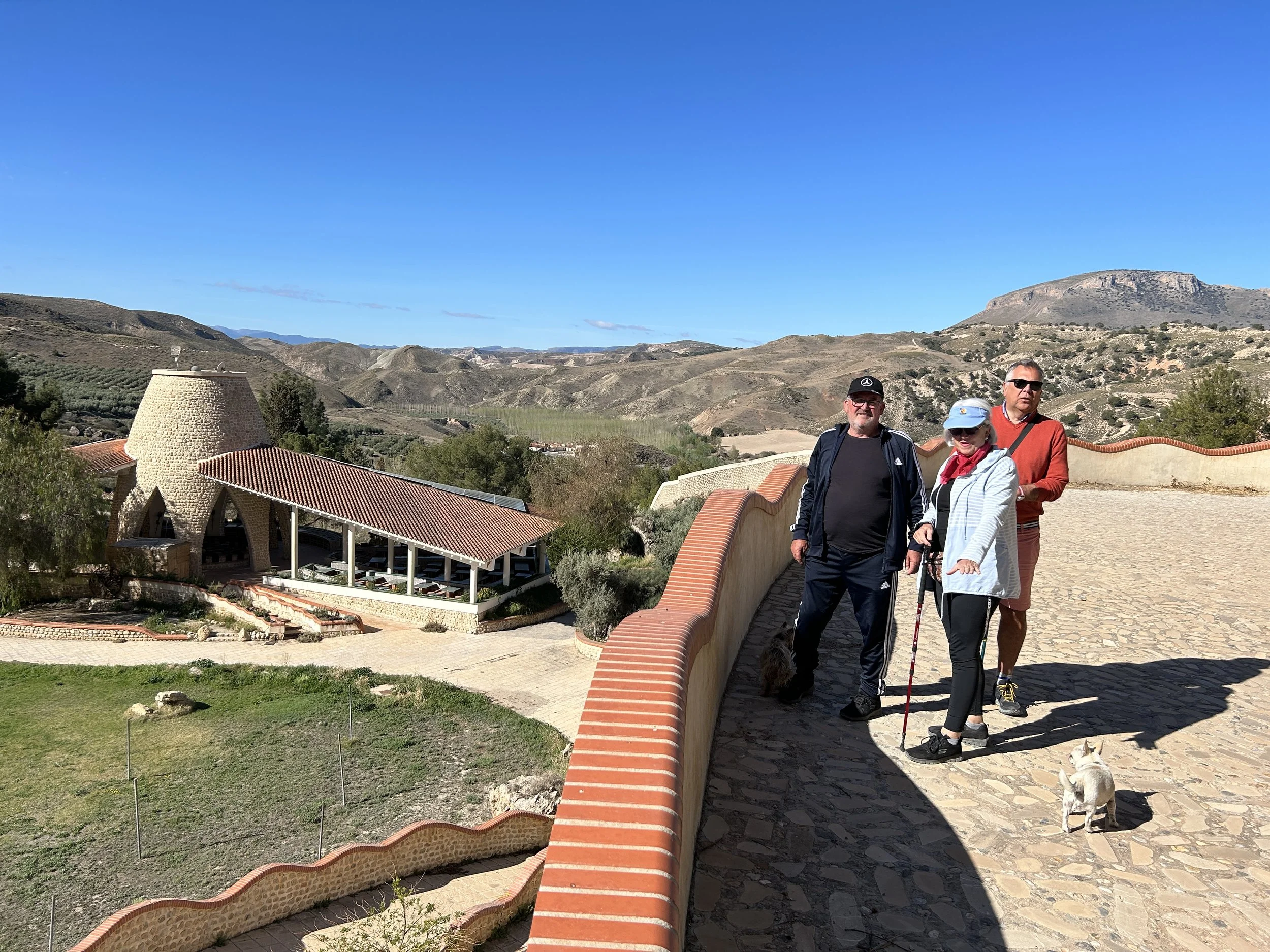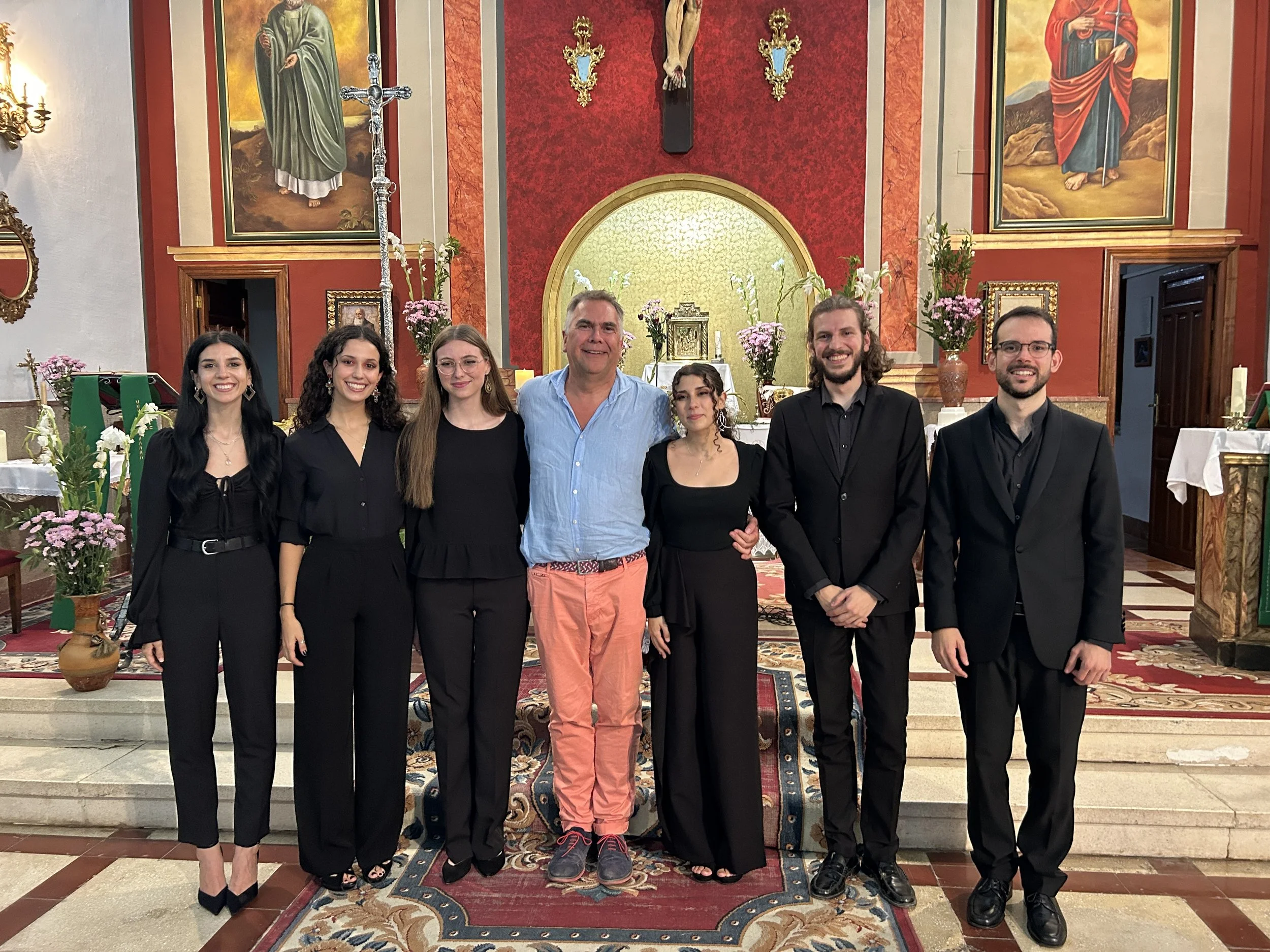Troglodytes for a Weekend Part 2
The hotel, Balneario de Alicun de las Torres, is rather a sad sight. Instead of getting ready for a really busy new season, the hotel seems to be caught up in a family dispute and has a slightly abandoned air. This is an enormous shame and this was clearly a very thriving business and has huge potential to be something very special. The hotel draws on the fact that it is built beside the source of an amazing natural warm water spring where 35 degree water is pushed up from deep within earth through a fissure between two geological plates. Cross the road from the hotel and you find yourself in a unique and beautiful wonderland formed partly by man but predominantly by the natural wonders of calcification. 3,500 years ago, settlers decided to channel the natural warm water to the village and so started a process that created a warm water acequias (water channel) that is 15 meters high in places. This is a constantly evolving, fossilised, dripping and vegetation-rich voyage into prehistory. It’s amazing hiking country with breathtaking views and the sheer magic of nature creating something before your eyes. Calcified grasses and tree roots can be seen in the cliff walls covering deep holes and cracks like veils over an aged face.
On one flat area above the acequias, it was clear to see another collection of dolmenes, one or two of which had been excavated but there are others waiting to be uncovered. A series of large flat stones, with gaps filled with carefully placed smaller cobbles appeared to be the base of an ancient settlement and stones circled the encampment where protective walls probably stood. In the distance, the snow-capped peaks of the Sierra Nevada cut into the blue sky.
There are warm water pools where people come and swim, and cascades of crystal clear water run over rocks.
This is a magical place that needs much more exploration, Without a doubt we will return as Gorafe is but one small part of the vast GeoParque. We noticed that a business in Gorafe had started to rent e-Bikes and we came across a group of e-cyclists on the flat plains above the village. How we envied them at that moment and we both decided that on our next visit we would be following the criss-cross of caminos into the depths of this amazing area.
We returned to Mari-Petra and Ramón’s cosy cave home for a barbecue lunch - wood and charcoal in the garden and a rack of pork belly accompanied by a mound of Ensaladilla Rusa, anchovies and preserved sardines. Cold beer, the warmth of the sun and the clear blue sky was the most perfect combination and we could easily have slipped into another dimension from which we might not have wanted to escape. M-P and Ramón are great hosts, and it is clear that Ramón has a very deep love of this area. We can now see why and it extends beyond the strength of family ties, although these are undeniably strong. This is a community that forms a minuscule part of the vast and almost inconceivably prehistoric crust of the planet in which it sits. However, it also shows the ingenuity and resilience of the people who have lived here, following in the footsteps of their neolithic predecessors, for thousands of years. Now that this region has been declared a UNESCO Global Geopark it can rest easy in the knowledge that it will remain unscathed for future generations, and we have the privilege of being able to stand on the edge of a wide gorge, carved deep by river erosion over 500,000 years. We can marvel at the yet-to-be-discovered dolmenes that punctuate the plains that sit above sheer cliffs and dramatic folding strata formed by the shifting of the earth’s crust. We can watch, mesmerised, as water drips through grasses creating new rock and casting nature into a fossilised world for later discovery.
Ramon in charge of a PROPER BBQ!
Andalucia never fails to throw up surprises and it has ignited in Andrew and I a passion for history, anthropology and archaeology. We are lucky that we live in an area with its own equally rich seam of history. The recent discovery of two teeth in a nearby cave has been declared one of the most important archaeological finds in Europe. The teeth belonged to a human being who lived here in Moclín 23,000 years ago and they belong to the second oldest human remains to have been discovered in continental Europe. The teeth produced DNA that filled in gaps in the archaeological and anthropological maps of Europe and has proved irrefutably that the European population moved to this part of Spain during the last Ice Age and most likely formed the foundation for European ancestry thereafter.
This discovery in La Cueva de Malalmuerzo has been much written about in the Spanish media, and National Geographic are due to visit in June, so the secret is out. However, due to the nature of the cave, and that water coursing through these subterranean chambers carried many artefacts and human remains suggests that, as archaeologists continue their excavations, many more older layers of history will be revealed, preserved beneath the rocks and sediment that nature continues to use to cover its tracks.











